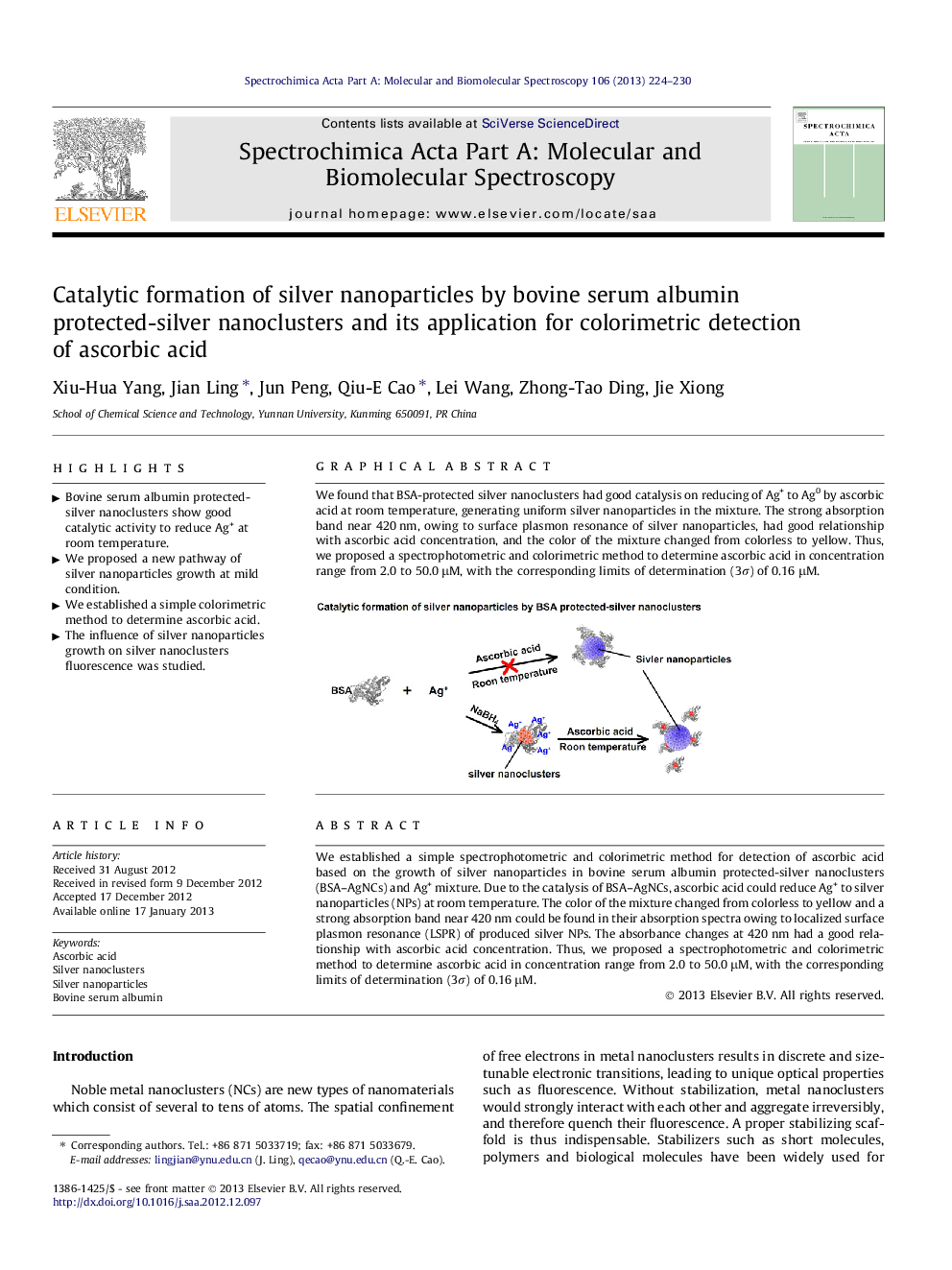| Article ID | Journal | Published Year | Pages | File Type |
|---|---|---|---|---|
| 1234117 | Spectrochimica Acta Part A: Molecular and Biomolecular Spectroscopy | 2013 | 7 Pages |
We established a simple spectrophotometric and colorimetric method for detection of ascorbic acid based on the growth of silver nanoparticles in bovine serum albumin protected-silver nanoclusters (BSA–AgNCs) and Ag+ mixture. Due to the catalysis of BSA–AgNCs, ascorbic acid could reduce Ag+ to silver nanoparticles (NPs) at room temperature. The color of the mixture changed from colorless to yellow and a strong absorption band near 420 nm could be found in their absorption spectra owing to localized surface plasmon resonance (LSPR) of produced silver NPs. The absorbance changes at 420 nm had a good relationship with ascorbic acid concentration. Thus, we proposed a spectrophotometric and colorimetric method to determine ascorbic acid in concentration range from 2.0 to 50.0 μM, with the corresponding limits of determination (3σ) of 0.16 μM.
Graphical abstractWe found that BSA-protected silver nanoclusters had good catalysis on reducing of Ag+ to Ag0 by ascorbic acid at room temperature, generating uniform silver nanoparticles in the mixture. The strong absorption band near 420 nm, owing to surface plasmon resonance of silver nanoparticles, had good relationship with ascorbic acid concentration, and the color of the mixture changed from colorless to yellow. Thus, we proposed a spectrophotometric and colorimetric method to determine ascorbic acid in concentration range from 2.0 to 50.0 μM, with the corresponding limits of determination (3σ) of 0.16 μM.Figure optionsDownload full-size imageDownload as PowerPoint slideHighlights► Bovine serum albumin protected-silver nanoclusters show good catalytic activity to reduce Ag+ at room temperature. ► We proposed a new pathway of silver nanoparticles growth at mild condition. ► We established a simple colorimetric method to determine ascorbic acid. ► The influence of silver nanoparticles growth on silver nanoclusters fluorescence was studied.
